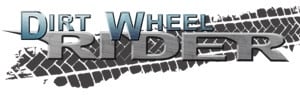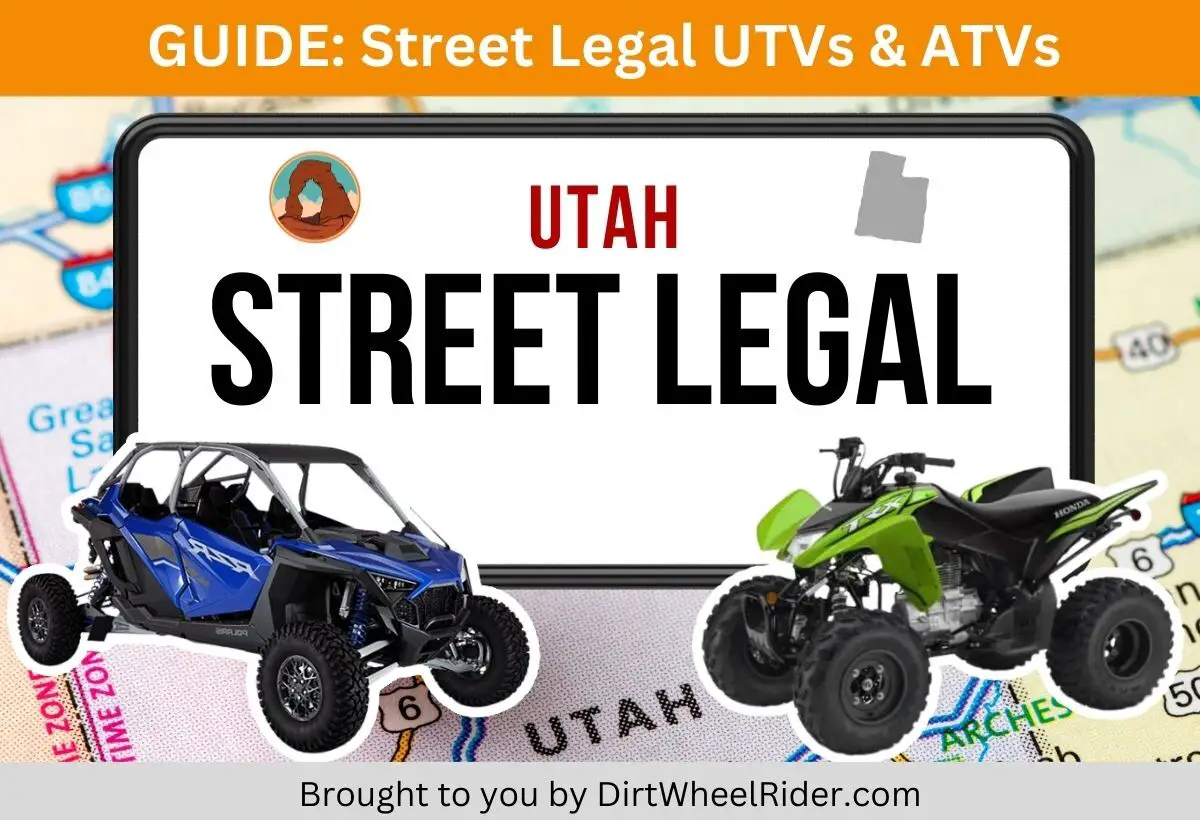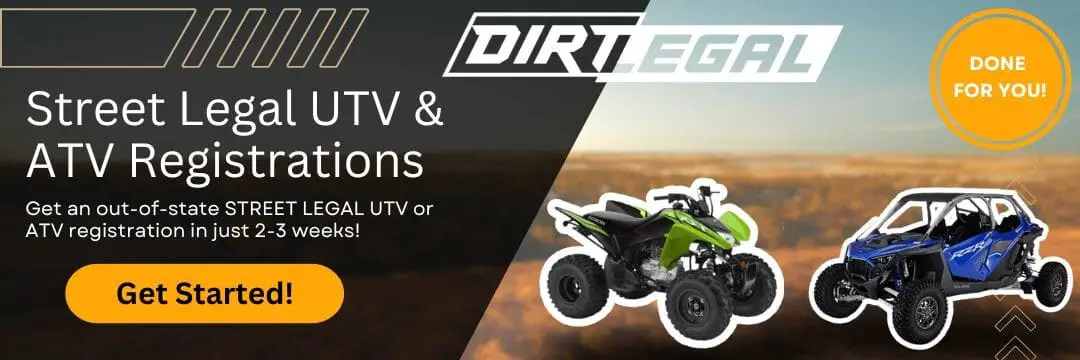Table of Contents
In this article, we will explain what you need to know about the street-legal law on ATVs and UTVs in the state of Utah. This is especially important if you are planning to take your off-road vehicles from the trails to public roads in Utah. To help you navigate this topic, we’ve compiled a list of frequently asked questions and answers to provide clarity on the matter.
- Is there any law in Utah that allows for ATVs or UTVs to be street legal?
- How does Utah’s law formally classify an ATV or UTV?
- Can an ATV or UTV be street-legal in Utah?
- What are the requirements to make an ATV or UTV street-legal?
- What are the operational and safety requirements when driving a street-legal ATV or UTV in Utah?
- Where can I drive my street-legal ATV or UTV in Utah?
- I am not a resident of Utah; can I still register my vehicle in this state?
Utah Legal Classification of ATVs and UTVs
Utah is one of the few states that has recognized the increasing use of ATVs and UTVs, where in fact, the 2022 Utah Code has provided definitions of these vehicles. In the state of Utah, ATVs and UTVs belong to the category of “off-highway vehicles”. These vehicles refer to “snowmobiles, all-terrain type I vehicle, all-terrain type II vehicle, all-terrain type III vehicle, or motorcycle.”
By now you might be wondering if the state of Utah does not recognize UTVs or side-by-sides as off-highway vehicles. And what are these multiple types of ATVs? Let’s find out below.
ATVs: All-terrain type I vehicle
Under the Utah Code, an all-terrain type 1 vehicle is defined as any motor vehicle with three or more low pressure tires, that is capable of travel on unimproved terrain and that is 52 inches or less in width, with an unladen dry weight of 1,500 pounds or less, and a seat that is intended to be straddled by the operator.
UTVs: All terrain type II vehicle
An all-terrain type II vehicle is defined as any motor vehicle with four or more low pressure tires that can travel on unimproved terrain, and has a steering wheel and non-straddle seats, with a rollover protection system. This vehicle may be electric-powered or gas-powered with an unladen weight of 3,500 pounds or less. This vehicle type does not include golf-carts, or vehicles to carry persons with disabilities, or vehicles that are not designed specifically for recreational purposes, or farm tractors. And all-terrain type III vehicles are any motor vehicles that can travel on unimproved terrain but do not fall under the first two types.
Now that we have these definitions, we can determine that in the state of Utah, an ATV is considered to be an all-terrain type 1 vehicle because it is operated in a straddle position, whereas a UTV is considered to be an all-terrain type II vehicle because it has seats that do not require the operator to sit in a straddle position and a steering wheel.
Can an ATV or UTV be street-legal in Utah?
The short answer to this is YES. In fact, the Utah Code has provided a specific term for this as “street-legal all-terrain vehicle” or “street-legal ATV”, which means all-terrain vehicles from types I through III that have been modified to meet the requirements to operate on public roads.
ATVs: What are the requirements to make an ATV street-legal in Utah?
In order to drive your ATV legally on public roads in the state of Utah, you must comply with the following requirements:
1. Paperwork
- Manufacturer’s Certificate of Origin
- Certificate of Title
- Safety Inspection Certificate
- VIN
- Emissions Test
- License plate
- Insurance
2. Parts
- Head lamps
- must have at least one
- Tail lamps
- must have at least one
- License plate light
- must have white light
- Rear reflectors
- at least one red reflector
- Rear stop lamp
- must have at least one
- Electric turn signals
- can be amber or red in color; must have one on each side of the front and rear
- Braking system
- other than a parking brake
- Horns
- Muffler and emission control system
- Rearview mirrors
- one on each side of the driver
- Windshield
- optional if operator wears an eye protection
- Speedometer
- must be illuminated for nighttime operation
- Passenger seat
- for vehicles designed to carry passengers
- Tires
- must not exceed the maximum size recommended by the vehicle manufacturer for the vehicle model and tire tread of at least 2/32 inches
UTVs: What are the requirements to make a UTV street-legal in Utah?
For a UTV to be registered as street-legal in the state of Utah, it must meet the requirements below.
1. Paperwork
- Manufacturer’s Certificate of Origin
- Certificate of Title
- Safety Inspection Certificate
- VIN
- Emissions Test
- License plate
- Insurance
2. Parts
- Headlamps
- must have two
- Tail lamps
- must have two
- License plate light
- Rear reflectors
- at least one red reflector
- Rear stop lamps
- must have two
- Electric turn signals
- can be amber or red in color; must have one on each side of the front and rear
- Braking system
- other than a parking brake
- Horns
- Muffler and emission control system
- Rearview mirrors
- one on each side of the driver
- Windshield
- optional if operator wears an eye protection
- Speedometer
- must be illuminated for nighttime operation
- Passenger seats
- for vehicles designed to carry passengers
- Seatbelts
- for vehicles with side-by-side or tandem seating
- Seat
- must have a height between 20 and 40 inches when measured at the forward edge of the seat bottom
- Tires
- height must not exceed 44 inches with a tread of at least 2/32 inches
What are the operational and safety requirements when driving a street-legal ATV or UTV in Utah?
When driving an ATV or UTV on public roads in Utah, you are required to adhere to the following operational and safety requirements:
- Driver’s License
- operators of motorcycles must have a motorcycle endorsement on their driver’s license.
- Insurance
- Helmets
- Riders under the age of 18 are required to wear USDOT-approved helmets whenever they are on public roads or highways in this state.
- Eye protection (in the absence of a windshield)
- Vehicle capacity
- Unless the vehicle is designed for more than one rider or another seat has been firmly attached to the rear or side, the operator may not carry a passenger.
Where can I drive my street-legal ATV, UTV or other OHV in Utah?
Generally, street-legal ATVs and UTVs are allowed to operate on public roads in Utah where other street-legal vehicles are also permitted, but with some exceptions.
Utah’s law prohibits ATVs, UTVs or other off-highway vehicles on roads that are:
- part of the interstate highway, and
- in highways located in counties of the first class (these are counties with at least a million population) where the highway is near a grade separated portion and the speed limit is above 50 miles per hour.
If my ATV or UTV is registered as “street legal” in Utah, can I drive it on the roadways in other states?
In many cases, YES. Many states honor “Registration Reciprocity” meaning that even if a vehicle cannot be registered in their state, they will accept another state’s registration as valid.
Please note though that this is a state-by-state situation as each state has different laws so it’s not possible to give blanket advice here. That said, drivers of OHVs in Utah can generally ride their registered OHV on the roadways in other states too so long as those states accept the Utah registration via reciprocal agreement. Click here to view ATV & UTV laws in other states.
I am not a resident of Utah; can I still register my vehicle in this state?
Maybe? Currently, the status of non-resident vehicle registration in the state of Utah remains unclear. We would recommend that you contact the Utah DMV to obtain current and accurate information for your situation.
Out-of-state registration of UTVs and ATVs is a detailed and nuanced topic though, and requires more specific advisement to your individual situation than we can provide in this article. As such, we have partnered with Dirtlegal.com. DirtLegal.com helps drivers to register their ATVs and UTVs in “street legal” states, so that they can be driven on roadways in other states that honor Registration Reciprocity.
Get STREET LEGAL with DirtLegal.com
Conclusion
ATVs and UTVs are fun and versatile vehicles that can be used for recreation, work, or transportation. In Utah, you can legally drive your ATV or UTV on public roads and highways if you meet certain requirements and follow certain rules. By making your ATV or UTV street-legal in Utah, you can enjoy more freedom and convenience while riding your vehicle. However, you also need to be aware of the exceptions and limitations that apply to ATV and UTV use on public roads in Utah, and respect the rights and safety of other road users.
While this article has provided a comprehensive overview of the street-legal laws on ATVs and UTVs in this state, it is important that you consult your local DMV for more specific and accurate information regarding ATV and UTV regulations. Because state laws can change over time and regulations differ between jurisdictions, relying solely on the information presented here may not provide the most up-to-date or region-specific details. Remember that street-legality is determined by state and local laws, and it is your responsibility as an ATV or UTV owner to ensure that you are operating your vehicle within the legal boundaries.
Helpful Resources:



